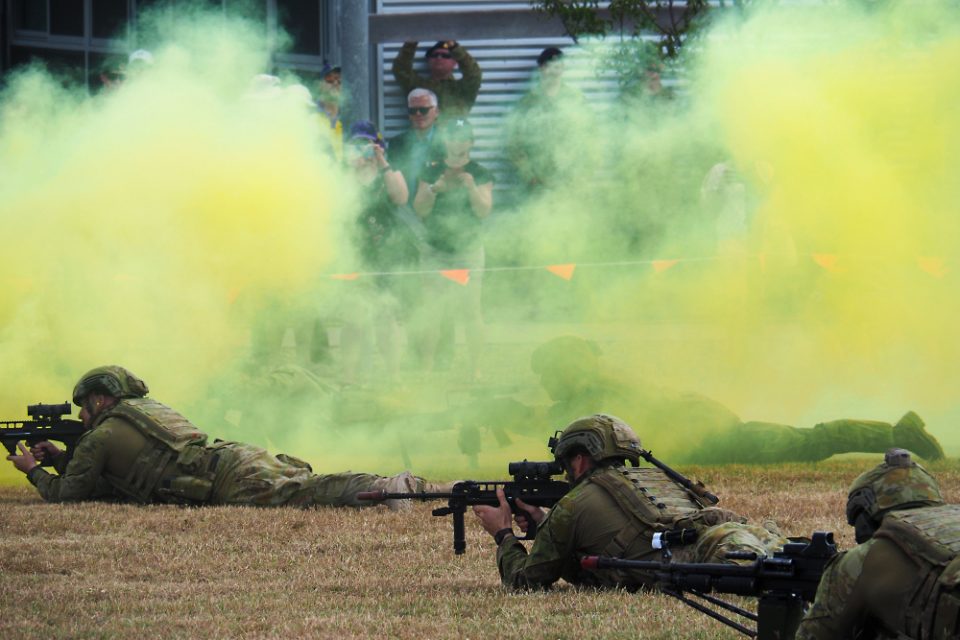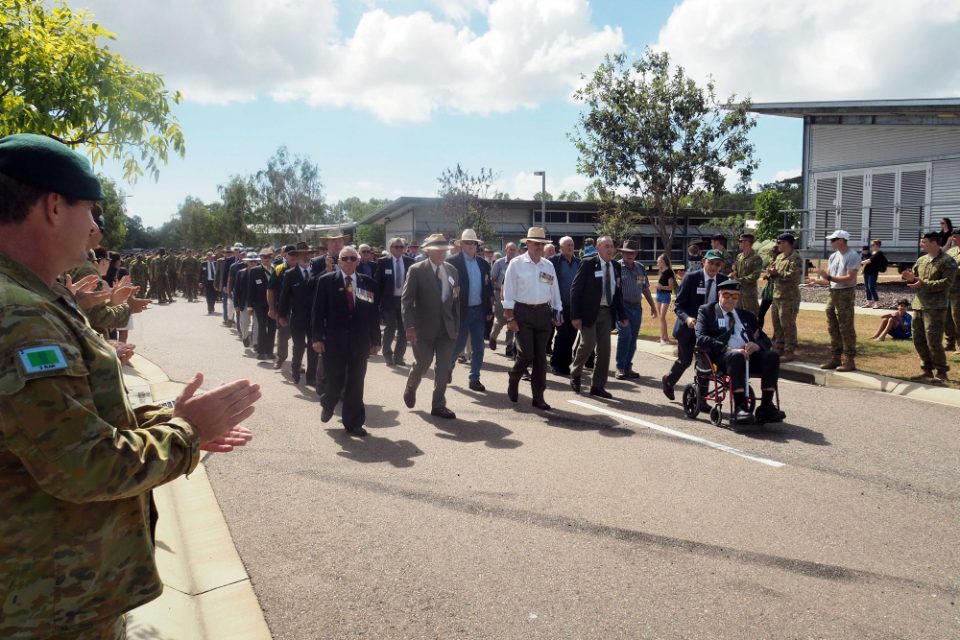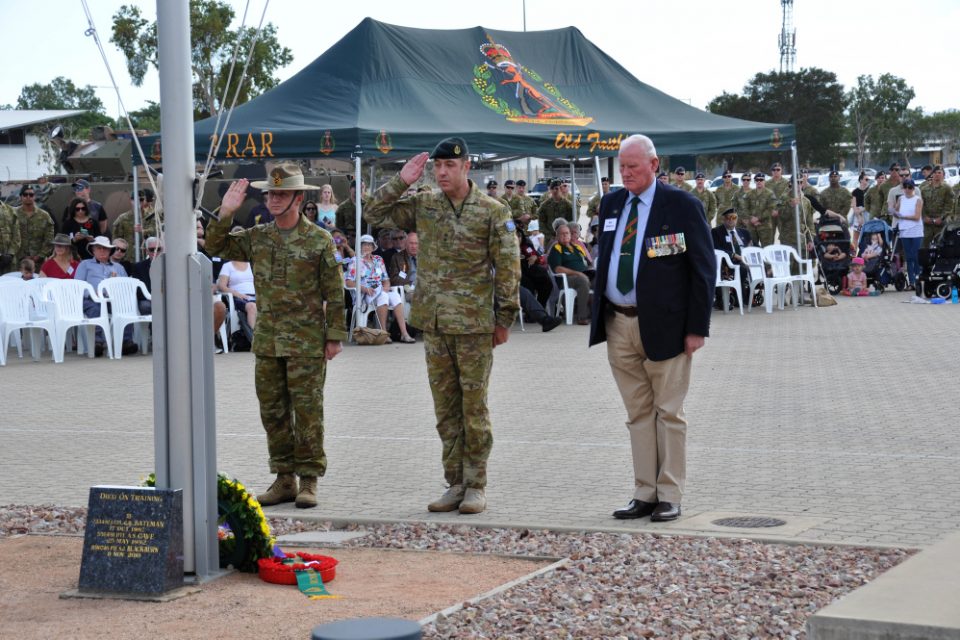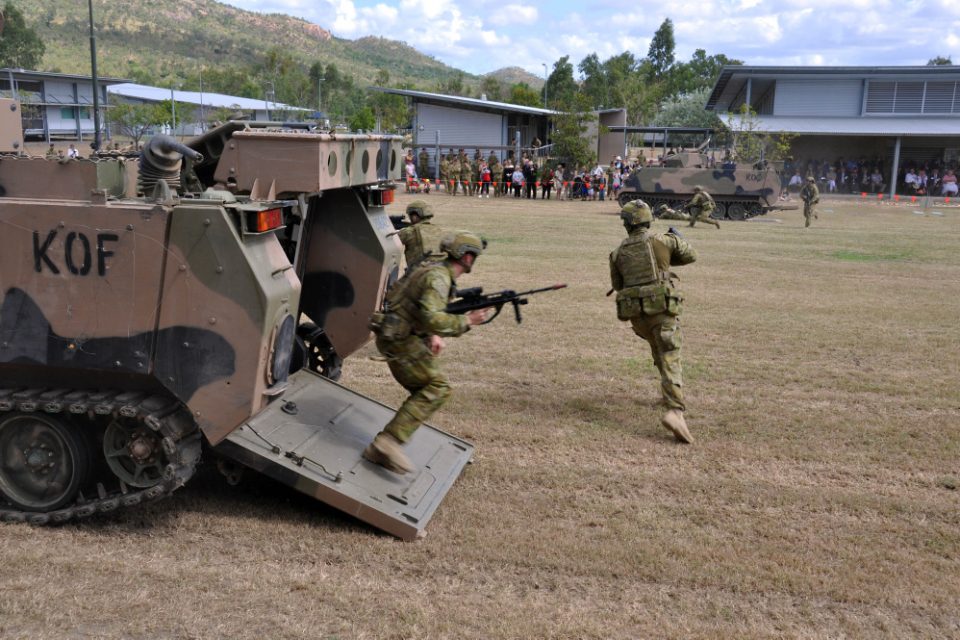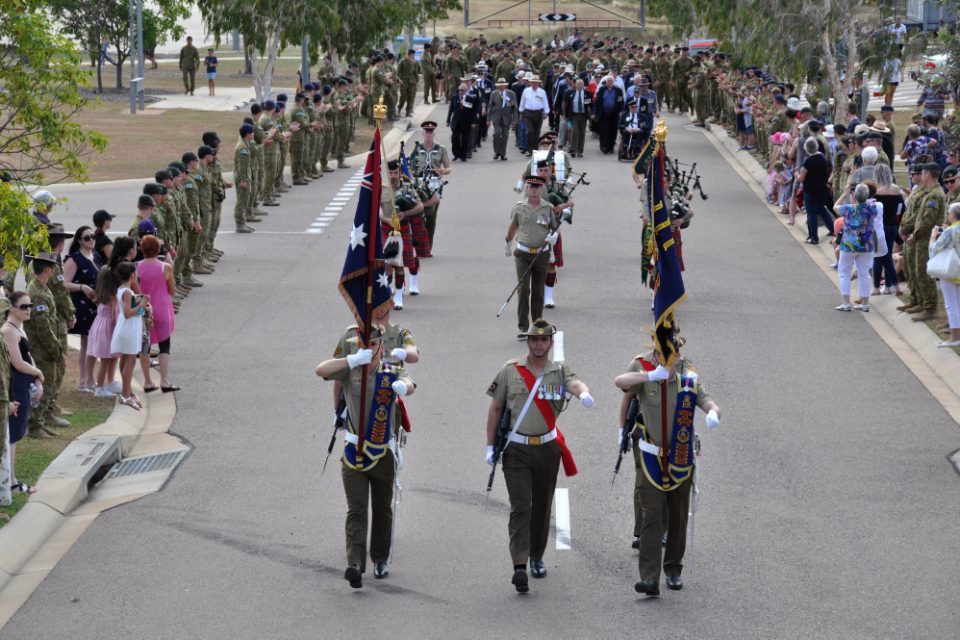Former members of 3rd Battallion, Royal Australian Regiment, who fought in the Battles of Fire Support Patrol Bases Coral and Balmoral are honoured as they march into the Madden Club at Lavarack Barracks, Townsville.
The commemorative service was followed by a demonstration of 3 RAR’s mechanised combined arms capability, including snipers, mortars and heavy weapons in support.
The veterans were then piped into the Madden Club behind the Queen’s and Regimental Colours, with the battalion lining the route as a mark of respect.
Australian Department of Defence
May 20, 2018
The Battle of Coral–Balmoral (12 May – 6 June 1968) was a series of actions fought during the Vietnam War between the 1st Australian Task Force (1 ATF) and the North Vietnamese 7th Division and Viet Cong Main Force units, 40 kilometres (25 mi) north-east of Saigon.
Following the defeat of the communist Tet offensive in January and February, in late April two Australian infantry battalions—the 1st and 3rd Battalions of the Royal Australian Regiment (RAR)—with supporting arms, were again deployed from their base at Nui Dat in Phuoc Tuy Province to positions astride infiltration routes leading to Saigon to interdict renewed movement against the capital.
Part of the wider allied Operation Toan Thang I, it was launched in response to intelligence reports of another impending communist offensive, yet the Australians experienced little fighting during this period.
Meanwhile, the Viet Cong successfully penetrated the capital on 5 May, plunging Saigon into chaos during the May Offensive in an attempt to influence the upcoming Paris peace talks scheduled to begin on the 13th. During three days of intense fighting the attacks were repelled by US and South Vietnamese forces, and although another attack was launched by the Viet Cong several days later, the offensive was again defeated with significant losses on both sides, causing extensive damage to Saigon and many civilian casualties.
By 12 May the fighting was over, and the North Vietnamese and Viet Cong were forced to withdraw having suffered heavy casualties. US casualties were also heavy and it proved to be their most costly week of the war.
1 ATF was redeployed on 12 May to obstruct the withdrawal of forces from the capital, with two battalions establishing a fire support base named FSB Coral, just east of Lai Khe in Binh Duong Province, in an area of operations known as AO Surfers. However, poor reconnaissance and inadequate operational planning led to delays and confusion during the fly-in, and the Australians had only partially completed FSB Coral by the evening.
The North Vietnamese mounted a number of battalion-sized assaults on the night of 12/13 May, with a heavy bombardment from 03:30 signalling the start. Exploiting the disorganised defence to penetrate the Australian perimeter, the North Vietnamese 141st Regiment temporarily captured a forward gun position during close-quarters fighting, before being repulsed by superior firepower the following morning. Casualties were heavy on both sides but the Australians had won a convincing victory. The following day 1 RAR was deployed to defend FSB Coral, while 3 RAR established FSB Coogee to the west to ambush staging areas and infiltration routes.
Coral was again assaulted in the early hours of 16 May, coming under a heavy barrage followed by another regimental-sized attack. Again the base was penetrated but after a six-hour battle the North Vietnamese were forced to withdraw after suffering heavy losses.
Expecting further fighting, the Australians were subsequently reinforced with Centurion tanks and additional artillery. On 22 May, FSB Coral was again attacked overnight, coming under a short but accurate mortar bombardment which was broken up by Australian artillery and mortars.
The Australians then moved against the communist base areas east of Route 16, with 3 RAR redeploying to establish FSB Balmoral on 24 May, 4.5 kilometres (2.8 mi) to the north. Now supported by tanks which had arrived from Coral just hours before, the infantry at Balmoral were subjected to a two-battalion attack by the North Vietnese 165th Regiment. Following a rocket and mortar barrage at 03:45 on 26 May, the attack fell primarily on D Company before being repelled with heavy casualties by the combined firepower of the tanks and infantry.
The next day the Australians at Coral assaulted a number of bunkers that had been located just outside the base, with a troop of Centurions supported by infantry destroying the bunkers and their occupants without loss to themselves. A second major North Vietnamese attack, again of regimental strength, was made against Balmoral at 02:30 on 28 May but was called off after 30 minutes after being soundly defeated by the supporting fire of the tanks, artillery and mortars.
Regardless, the battle continued into June as the Australians patrolled their area of operations.
However, with contacts decreasing, 1 ATF returned to Nui Dat on 6 June, being relieved by US and South Vietnamese forces.
The battle was the first time the Australians had clashed with regular North Vietnamese Army units operating in regimental strength in conventional warfare.
D uring 26 days of fighting the North Vietnamese and Viet Cong sustained heavy losses and were forced to postpone a further attack on Saigon, while 1 ATF also suffered significant casualties.
The largest unit-level action of the war for the Australians, today the battle is considered one of the most famous actions fought by the Australian Army during the Vietnam War.



